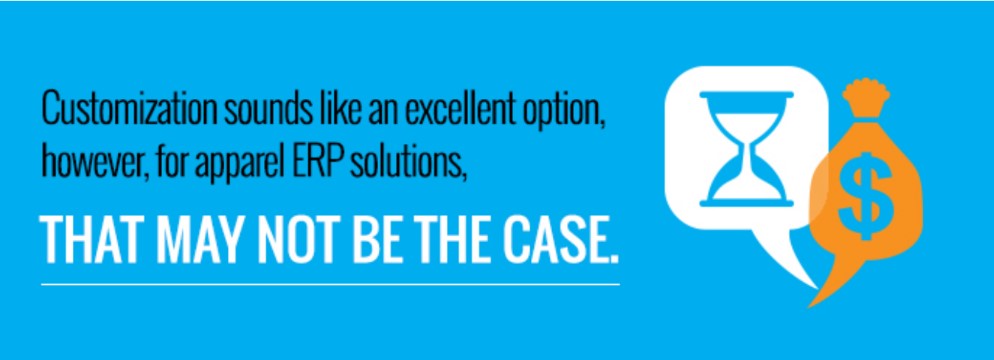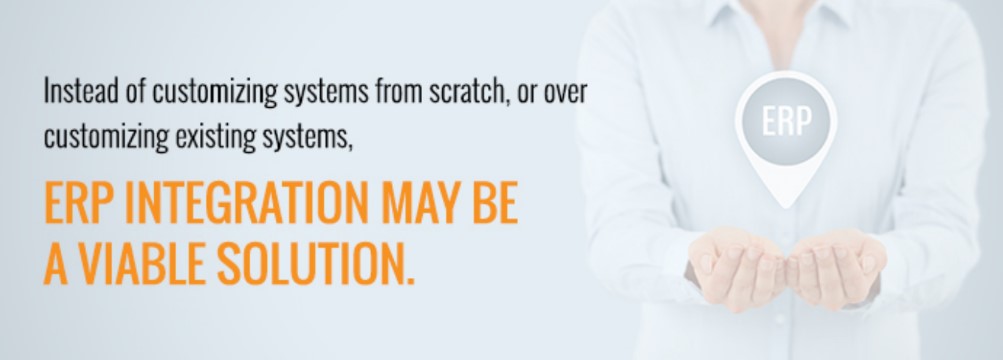In Chapter 1, we introduced the module-based ERP integration model. If you’ve done research on your own, you may have found other solutions that offer completely customized solutions.

The Trouble With Over-Customization
If you’re spending a significant amount of money on an ERP solution, you want it to meet your needs. Because of this, customization may sound appealing. Why wouldn’t it be a good fit to customize your software to get exactly what you’re looking for?
The statistics sound even more promising: 90% of ERP implementations include at least a basic level of customization.
While a basic level of customization is to be expected — ERP solutions should be branded to meet specific company needs – over-customization leads to trouble.
Problems could include:
- Added expenses: It takes a lot of time and resources to program, test and customize code. This is a contributing reason why 57% of ERP projects exceed projected budgets.
- Implementation delays: Over-customization is a major reason why 57% of implementations take longer than expected.
More Common Areas of Simple Customization
Some customization is expected for a product to run smoothly without rewriting the interface from scratch.
These include:
- Changes in the user interface to adapt the design of screens and dialogs for certain users or groups.
- Reports, documents and forms that are generated by ERP systems and are customized to include exactly what a client is looking for.
- Workflows — each business has a different process and sequence of events that require modification during implementation.
By selecting an ERP system that’s designed for the apparel industry, you’re already moving in the right direction. Small changes can be made to the system to reflect your needs in existing modules for specific functions, but fewer customizations will be required throughout the process, with a focus on minor configurations instead.
ERP Planning and Integration as a Solution
Instead of customizing systems from scratch or over-customizing existing systems, ERP integration may be a viable solution.

The process combines multiple systems or modules with each other to meet the specific needs of a business. Because this works with existing tools and modules, the need for customization is minimized, especially when working with providers who understand specific modules and third-party tools required for your industry.
By integrating existing modules and tools, less time is spent on customization and re-writing code, which saves costs and ensures easy upgrades in the future. The process leads to a longer-functioning enterprise resource planning system, which provides more value in the long-run.
Apparel ERP integration optimizes and centralizes business processes while ensuring a single vendor support team can handle any issues, which leads to increased growth potential and success.
Apparel ERP integration optimizes and centralizes business processes while ensuring a single vendor support team can handle any issues, which leads to increased growth potential and success.